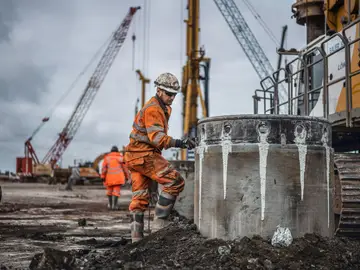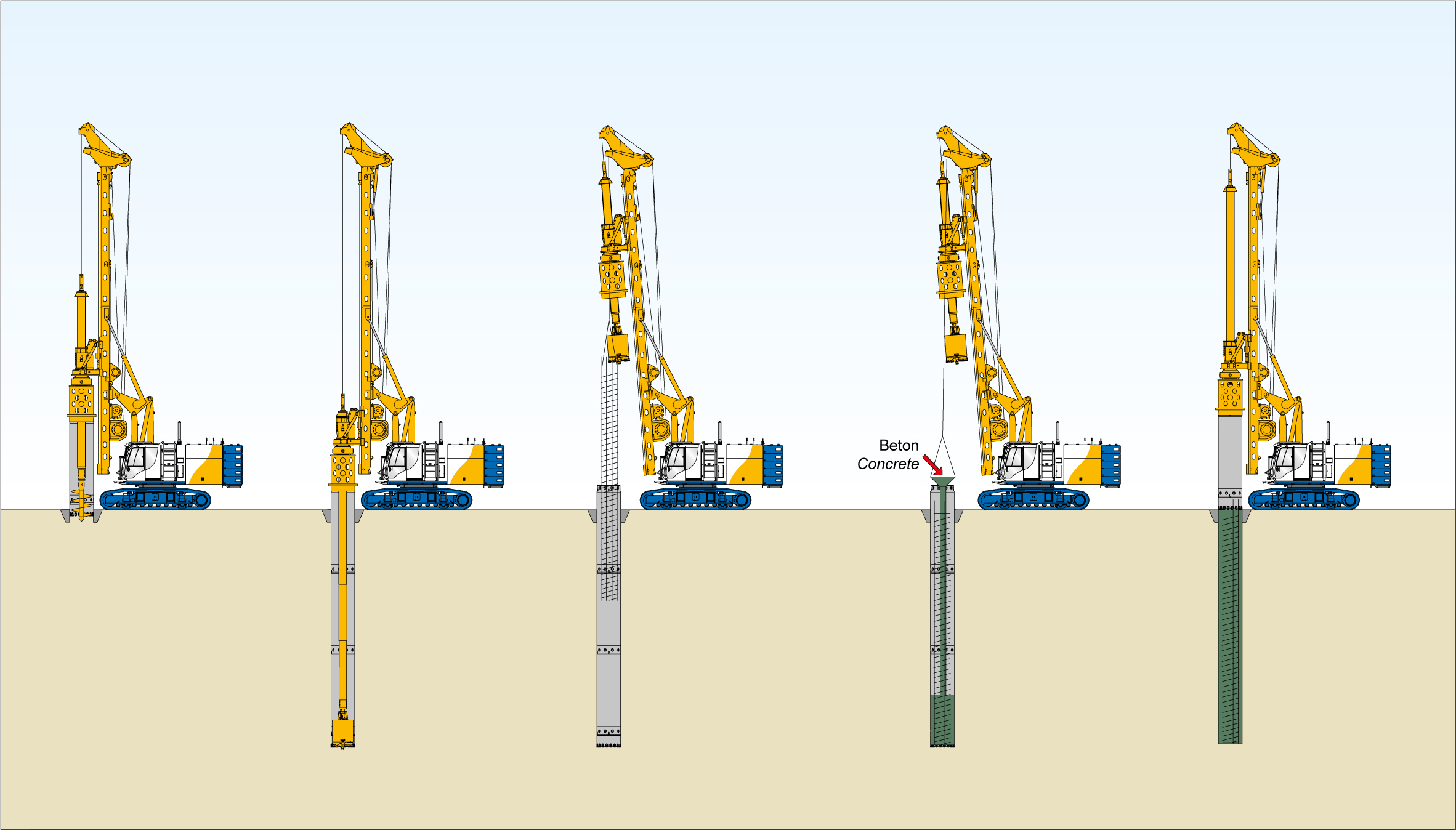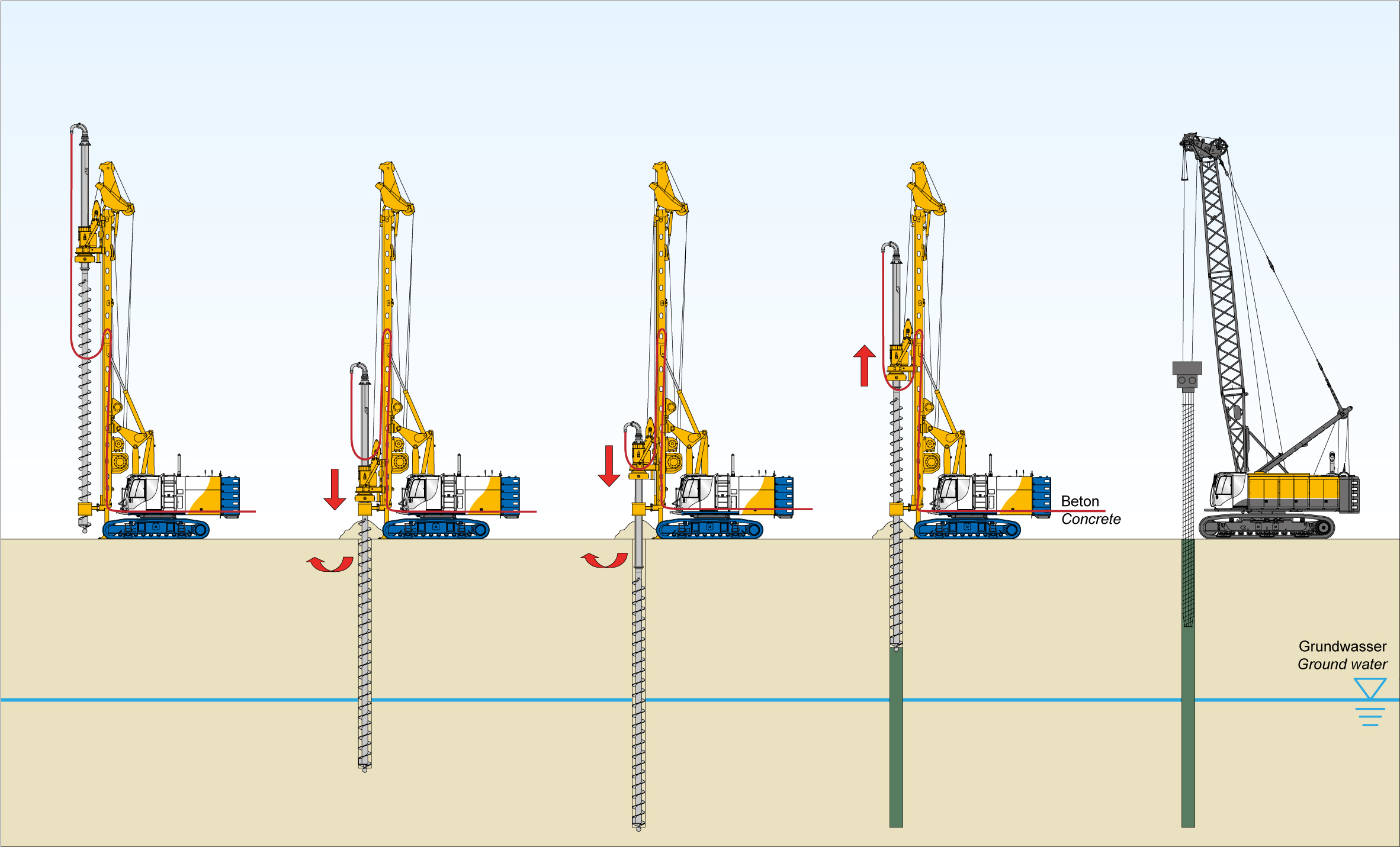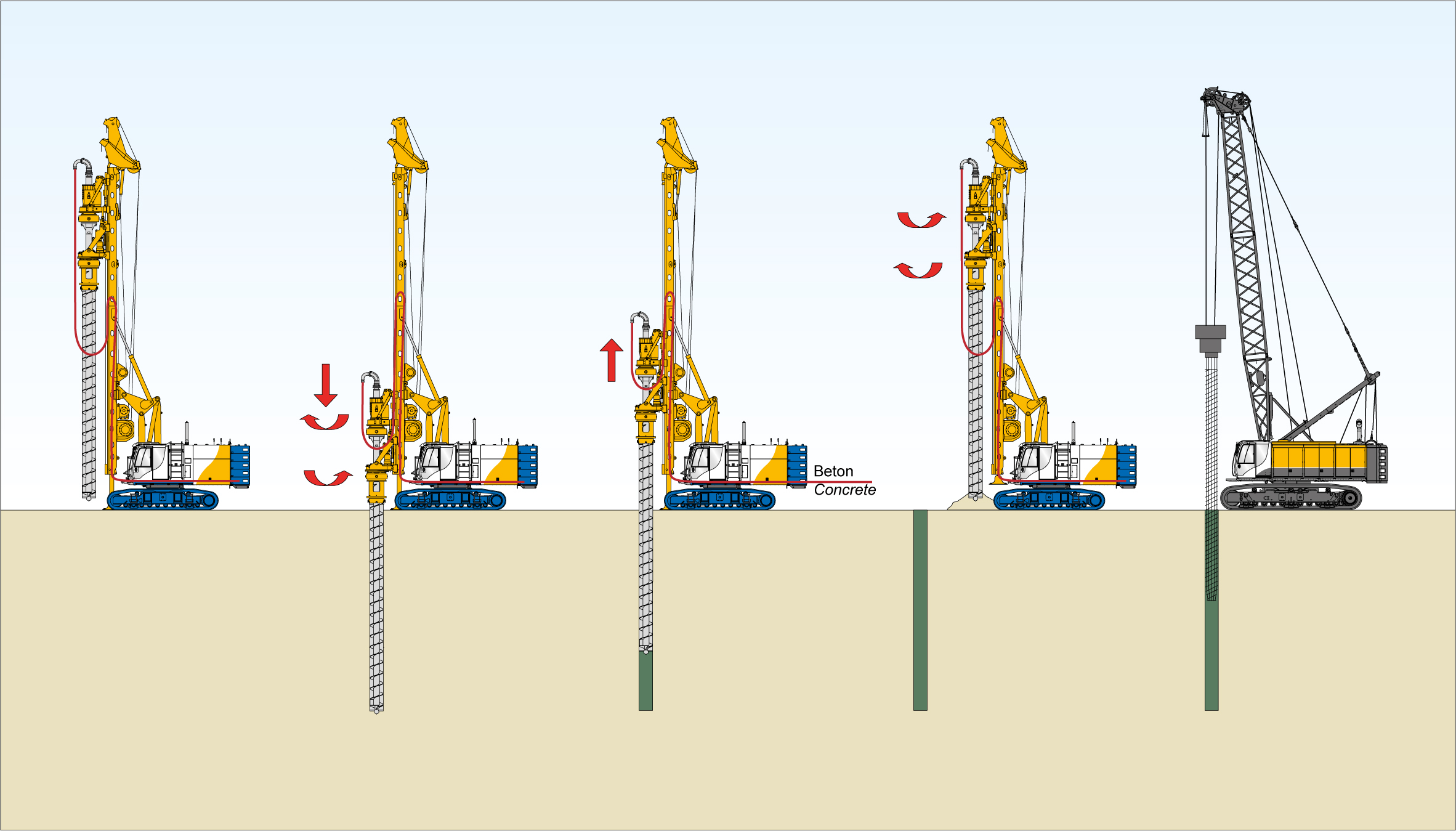Drilling methods in specialist foundation engineering
When constructing bridges, tunnels, skyscrapers and other structures that reach deep into the ground, drilling methods play an important role. There are multiple methods for constructing piles as stable and secure foundation elements for a structure. The most common drilling methods include Kelly drilling, cased or uncased continuous flight auger drilling and full displacement pile drilling.
Kelly Drilling
Kelly drilling involves a classic pile system which can also be used to construct deep foundations. Torque and crowd force are transferred to the tool using a telescopic Kelly bar. A slurry or casing are used to support the bore hole wall. The casings are installed using the rotary drive, a torque converter (BTM) or an attached casing oscillator. The Kelly drilling method can be executed in all soil types (including rock). Depending on the subsoil composition, various different drilling tools are used. The diameters for this method vary between 600 mm and 3,000 mm, the maximum drilling depth is 125 m.
Continuous Flight Auger Drilling (CFA)
Continuous flight auger drilling is the most common single-pass drilling method. This can be executed with BG drilling rigs, RTG pile driving equipment and MC duty-cycle cranes plus the relevant attachments. The bore hole wall is stabilized by the soil that is loosened and transported via the spirals of the auger. An active crowd unit makes it possible to penetrate into hard soil strata and rock socketing up to 20 MPa. The concreting work for the pile is carried out with a pump through the hollow stem of the auger. The B-Tronic assistance systems control the extraction and concreting process. With the continuous flight auger drilling method, diameters from 600 mm to 1,200 mm are possible as well as maximum drilling depths of 50 m.
Cased Continuous Flight Auger Drilling (CCFA)
Cased continuous flight auger drilling is primarily used for the construction of secant pile walls. Compared to the conventional systems with fully cased piles using the Kelly drilling method or standard continuous flight auger drilling, the Cased CFA system offers several advantages in terms of cost and time expenditure:
- Shorter installation times
- High vertical precision
- Protection of pile against impact from surrounding soil (for example due to groundwater)
- Uniform drilling and concreting performance thanks to use of assistance systems
- Clean site thanks to dry soil excavation
- Easy retrofitting of drilling rig
- Penetration of hard soil strata possible
- Low noise pollution compared with cased piles using the Kelly drilling method
Full Displacement Piling (FDP)
Displacement piles are in-situ concrete piles for which a displacement drill head is turned in to the soil and pressed with a drilling rig. The prerequisite for this method is a modern drilling rig with high torque, high crowd force and retraction force as well as a tall, torsion-resistant drilling mast. The advantages of full displacement pile drilling include
- Minimization of excavation material,
- Vibrationless construction process,
- Reduced consumption of excess concrete and
- High load-bearing capacity.
Downloads
Single-pass drilling methods - Full Displacement Piling (FDP)
Any questions?
I look forward to receiving your message or your call.

You might also be interested in:
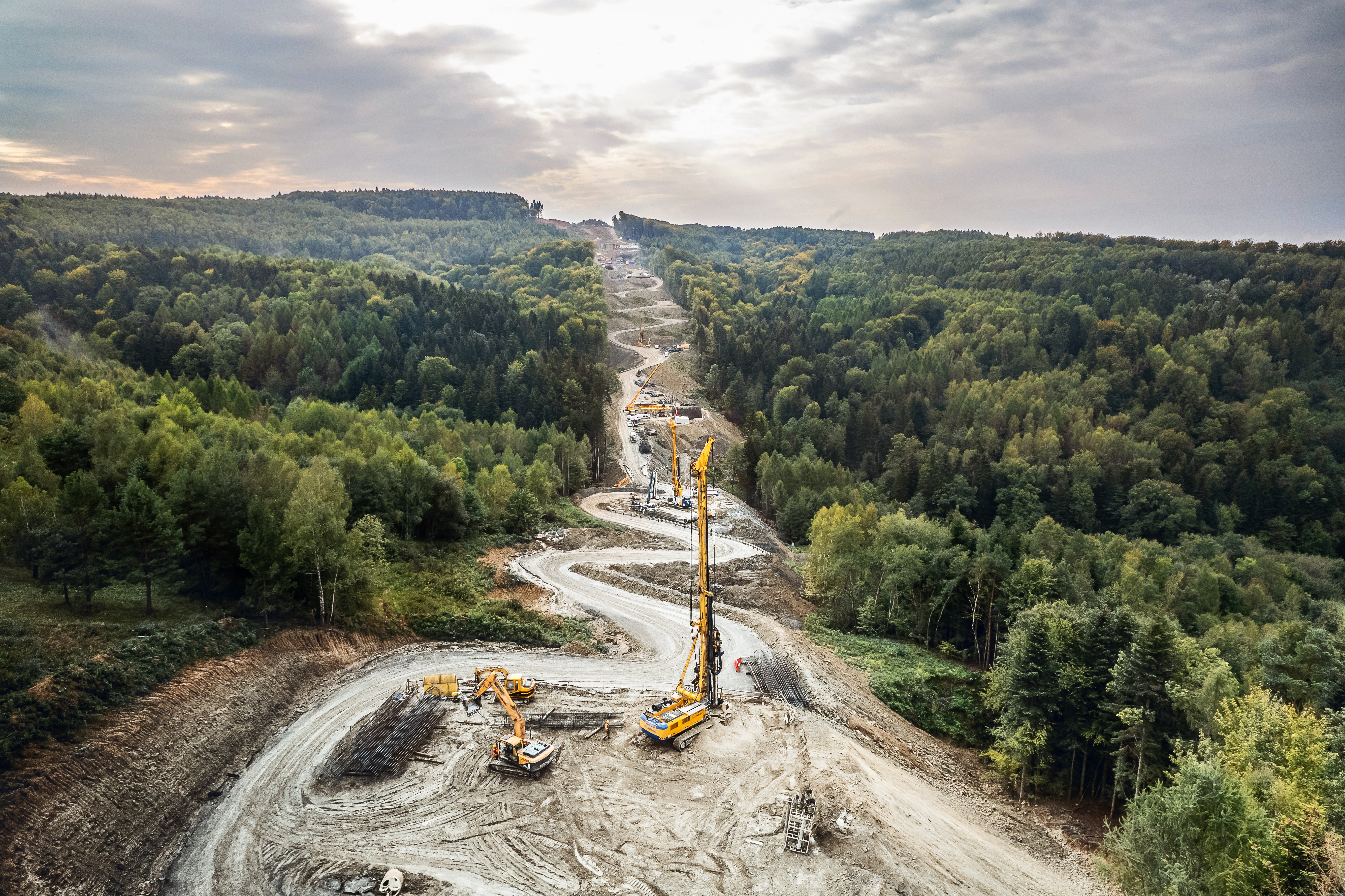
Are you looking for a powerful and reliable drilling rig? Discover the advantages of our BG series now and take it for a spin!

Find the right drilling tool in just three steps with our Dritoc drilling tool configurator!
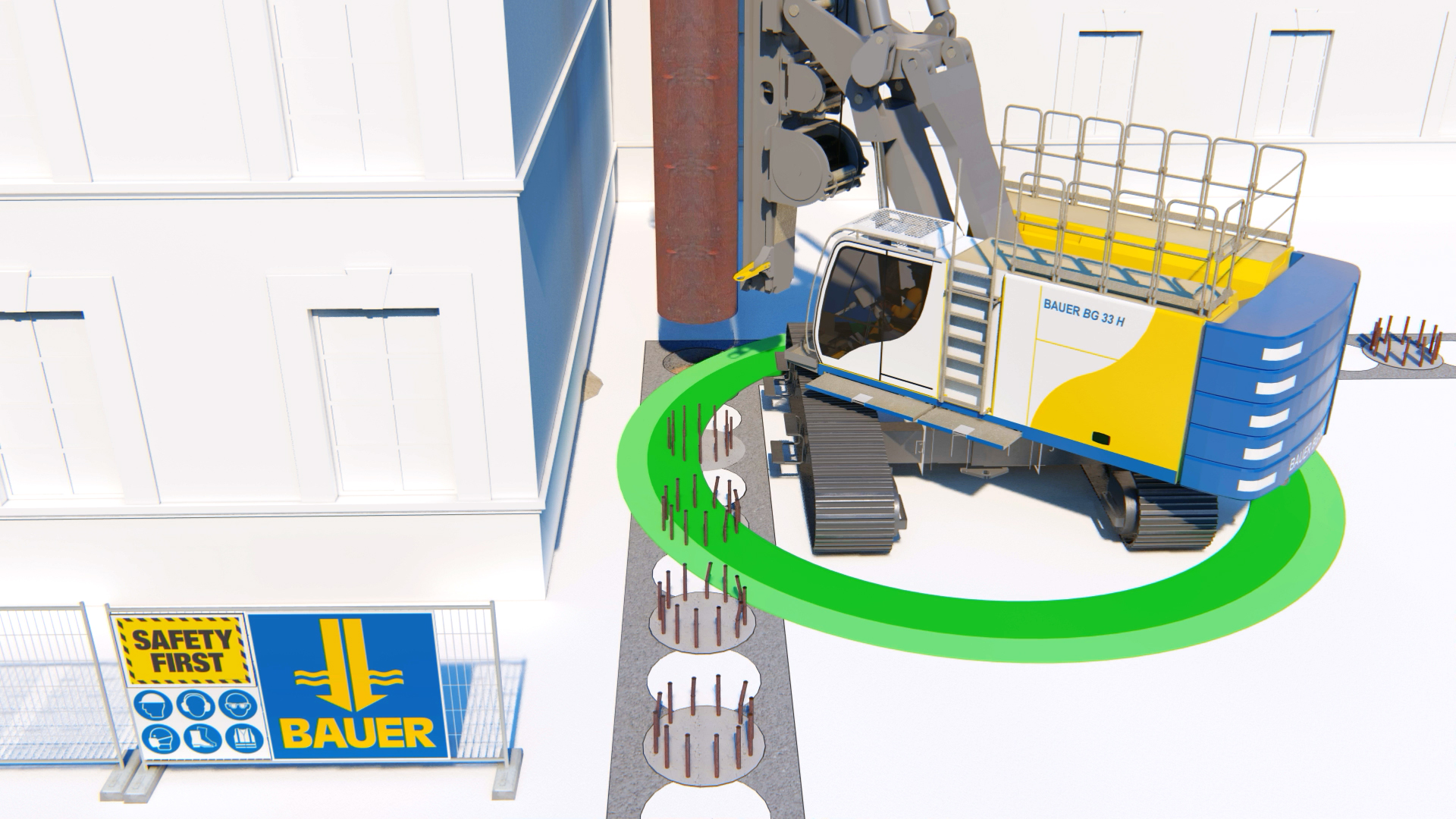
Do you care about efficiency and safety on site? We do too! Learn how our assistance systems for drilling rigs can help you in that regard.

Digital project management: Get a quick overview of the current status of your specialist foundation engineering projects.
